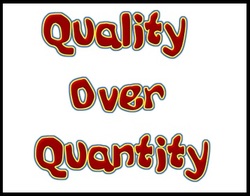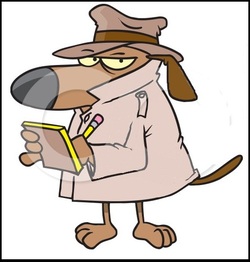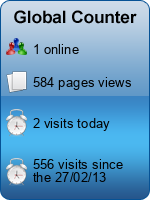 If you are one that considers most websites to be the same, try to evaluate Google to Facebook or Yahoo to Bing. The elements of these sites show the importance of a quality website design. The ideas in this post should be used like a reference to raise your awareness of the possibilities you can incorporate into making your web design one of a kind.
Google loves fast websites. A fast website is a great website.This is what Brisbane design agency provides its clients. Anyway, you can't assume much from impatient viewers. If they are left viewing an incomplete page for minutes whilst your content loads, the frustration will likely lead to closing your site and find what they are looking for in other places.
You should validate each web page that you create. Something you should avoid is using a "what you see is what you get" editor when validating your website designs. If you choose to use all those programs, be sure that you take extra effort to utilize a validation service to validate your code. This kind of metric sits well with Google. A free service called W3C is a great start for this.
Although most people are familiar with Photoshop, many are unacquainted with a similar Adobe product called Dreamweaver. This software is a gold mine for web-developers and allows you to create any kind of page, content, or function you desire. I suggest looking into this type of software and how it can assist you in your web design objectives. Remember - you need to be extremely unique with your web design.
Making a site that is cross-functional across various platforms will attract more unique guests. You will also benefit from becoming smooth in several platforms, including PHP as well as Java. Web development is another language - one that you can become fluent in with practice like a regular language! Whether you are designing a brand new site, or simply helping a buddy launch their own, a wide variety of experience and knowledge can help you in the long run.
Create a favicon for your website. This is a small graphic which can be seen in the browser and will make it easier for your visitors to bookmark your site. Once they pull up their bookmarks, your memorable favicon will stand out. Your own favicon should be constant with your website's logo and design features.
If a design company doesn't have a portfolio available, I wouldn't even consider them. Cautiously evaluate the portfolios of the companies which are in your consideration set. You want to make certain they have the proper experience, knowledge, popularity, and have the capital to satisfy your demands. The company's portfolio will show you how experienced and well-informed they are.
When you decide to venture all on your own web design, you most likely are not going to create a revolutionary site like Twitter or Facebook. Overall, the likelihood of making a worldwide known site are sleek. However , with unique web design skills, you can create attractive sites that will function even better than those owned by a major company. Use the tips learned here, and start designing your site today.
To have a better understand about web designing, check out Icreate Solutions.
 SEO stands for Search Engine Optimisation. It's a term common to just about everyone nowadays. Anyone with a website desires their website to appear on the very first page of google for their keyword or key phrase. This worthy goal is becoming progressively difficult as thousands more websites are made and indexed each day.
It is also a field that changes quickly, as Search Engines – like Google continue to shift the goal posts while they modify and improve the way they rank pages. Further these ranking algorithms are carefully guarded secrets, so the precise location of said goal posts, aren’t actually known by anyone outside Google.
However there is a lot that is known. What I am going to concentrate on in this article are the fundamentals, and this article is targeted at the non-technical website owner, enthusiastic about the essentials.
The field of SEO is generally split into two distinct subjects. “ON Page” and “OFF Page” SEO.
ON Page SEO
ON page SEO is the easy part. Its about tweaking the information of your website, so that Search Engines can look on your own site in the most favorable light possible. The following list includes the most crucial aspects of On Page SEO. If you don’t know what all these terms mean, that’s okay, but the person that develops your website should definitely be on top of this..
- Have a keyword suitable title tag for each page.
- Have a keyword appropriate description meta tag for every page.
- Utilize H1, H2, H3 & tags throughout your pages to spotlight the key content of each page, and underline those keywords to Google.
- Have plain text links internally to all your pages. (A footer is useful for this)
- Include keywords, in the page path. eg www.site.com/services/keyword/
- Include keywords in alt tags for each image, so Google attributes value to your site’s images.
- Have a content loaded site full of useful info for people, this will normally create a keyword rich website.
- The larger your site the better. The more content google can index the better. A great way to add to your site over time is through a blog. (like this one) This also provides useful industry information to your viewers.
-Blog writing also keeps your website fresh, update frequency is also something Google considers.
If you don't know about any of this stuff, that isn't a problem. There are many companies out there. One example would be Icreate Solutions. They are known for there innovative designs.
OFF Page SEO
OFF page SEO is a tricky one. One of the primary ways Google measures your site’s importance vs all the other sites out there, is by how many other sites link to your one. If your site has 200 incoming links, and your competitor has 2, all other things being equal, Google will consider your site far more relevant and list it higher.
Getting other sites to link to your own, isn’t that simple and is one of the crucial activities SEO companies traditionally offer. Commonly called “link building”. Google doesn’t like to be tricked though, and the old techniques of building a large number of incoming links automagically via networks of spammy websites, no longer works. Infact you would be penalised for this. Quality SEO companies do not engage in this activity. Google now measures all inbound themselves for their quality and importance.
A great way to increase inbound links, is to publish quality content out there on the interweb, with links back to your website. This might be on Social Media, or websites like articlebase. com, squidoo, youtube, digg and so forth
Also posting useful (non spammy) comments on other quality websites, with a discreet backlink – is a great strategy.
This is obviously a lot of work, a good idea is to take a long term approach at off page SEO, and make frequent small hits at it. Or engage a quality SEO company to assist with an off page strategy.
Social Media & Content Creation I mentioned before its good to have a large site, and even more important to have a very freshly updated site. Well a good way to do that is by using your blog. Write an article weekly. Make it helpful. Google will like that content is changing each time it pays a visit, with time the indexable content of your website will continue to grow and develop!
The other thing which is cool about blog pages, is they act as new entry points to your site. If you write a blog reviewing the new xyz widget your business sells, and an xyz widget is a relatively unique item. There is a chance your article may just show top on google for a search of xyz widget. With time, blog pages can have a large impact on your websites traffic.
Make the most out from the fantastic article you’ve just written, and hit your Social Media channels, with a quick excerpt along with a link back to your blog post. Get some eyes reading it.
Also your site needs Social Media buttons. Allowing visitors to Facebook like, Google plus, tweet or even Pinterest pages. This is good because;
- It helps spread the word about your website.
- It is widely believed that social measures, will probably be used more and more by Search Engine algorithms. Particularly the Google Plus button. A site with 20 Google pluses, will rank higher than a site with none. Apparently this is not happening yet, however it is likely just a matter of when, so preferable to start building some social recommendations today.
The PPC option
PPC stands for pay-per-click. It is paid advertising. PPC's are quite advantageous for people with like real estate advertising. Google’s version of this is Google Adwords. Many sites, that do not list on page 1 organically in a Google can still bring a reliable stream of traffic to their site through paid advertising. You can advertise for as little as a $1 a day, and can be scaled up and down as required. It can be a good supplement to your SEO efforts to get the phone ringing now, while your site climbs the stairs of Google.
Summary
SEO is a journey. The days of getting to number 1 easily are gone, there's just too much competitors. You need a site that is built right, that is number 1. But you also have to commit to a long term strategy of quality content publishing, social interaction, and quality backlink. It is a big job, but like any big task with time it can simply be managed with lots of small consistent efforts.
Also the more you do it, the easier it gets.
 So you’ve started up your own business or even need a design to sell/promote your product or service or business. You need a good logo, some business cards, stationery & assorted marketing collateral. Where can you go from here? Many individuals will fall into the trap of signing up for a ‘can’t believe it’s so cheap’ design deal online. There are plenty of people offering design services such as a Google apps consultant, and they range in experience from true professionals with years of experience to high school students with fake software who would like to make a quick buck. Will you get the opportunity to speak with them about your business And the direction it is headed?
One of the best ways to get a great designer is to ask around. If you have a buddy or colleague that has a good logo or brochure for their business, simply ask who has done their design work. Contacting someone whose work you're already impressed with is a step in the right direction. Failing this it might be time to put Google to work for you. Search on the internet for graphic designers in your area & start to check out their sites. These days the very best designers will have an online profile so prospective customers can get a feel for the work they have completed.
When looking for a graphic designer there are some questions you need to answer:
Do they have a professional, well designed site? The design quality of their website is most likely a fair reflection of their design skills.
Do they have a strong portfolio along with a wide range of designs? It is important for you to like their work & feel assured they can speak your message.
Are they very easily contactable? Are you able to get in touch with them by phone or do they only offer online/email contact? A designer really has to get within your business which comes best from direct contact with you, possibly face to face, over the phone or even a video call.
Do they have great interpersonal skills? A great designer should be able to interact well with their clients. They will work carefully with you to develop a creative brief that is right on target.
Will they offer you with contact details for a couple of their clients so you can get a reference? An excellent designer will have no problems letting their clients sing their good remarks.
How do they charge for their work? Will you be paying an per hour rate or are they confident enough to charge a flat fee for the job? Do not hesitate to ask questions about their fees – you do not want any nasty surprises that will throw your financial budget down the drain.
Will these people manage to carry out the work in a timely fashion? Do not expect to find a designer & have your new logo within a couple of hours. Provide a timeline that gives your designer plenty of time to plan, research & most of all create!
Are they appropriately certified? It is a good idea to check your prospective designer’s qualifications. It might not be a regulated profession in Australia at this time, but graphic design is a specialized field like accounting, architecture or law. You wouldn’t hire a lawyer that was not properly qualified and the same should go for any graphic designer. Professional graphic designers will be happy to tell you where they studied and what certification they obtained. Their application of design principles and adhering to design procedures and commercial guidelines is a good indicator of a professional, well versed graphic designer.
When you find the designer that is the perfect fit for you the results will be awesome. Always remember that communication is essential – both before, during & after the design process. Never accept a design that you do not absolutely love & can stand proudly alongside. A great designer will never want you to be satisfied with something good – they will want you to be amazed by the end result.
Learn more about graphic designing from Icreate Solutions.
 Start reading a piece of marketing material nowadays and you’ll see bullet points left, right and centre. But are they being used correctly or just thrown in there for no good reason? I’m a big fan of bullet points when they are used well. We live in a fast paced world and get bombarded with info everywhere we turn. Having a topic on IT small business support means more key points rather than long sentences full of info. Nowadays we don’t really have time and energy to read through endless paragraphs of info. We want to have the key benefits of your products or services given to us straight up. No messing around, give it to us short and nice.
Good bullet points:
♦ Are Simple To Read
♦ Draw Your Attention
♦ Give You The Real Facts
♦ Break Up The Copy
If you can, short punchy bullet points work best. Getting each point across using minimum words is great. Your readers are able to scan through the material you’re providing and walk away with maximum information about your product or offer.
There are times when longer bullet points might be needed. Perhaps you are explaining some features, or giving guidelines. Longer bullet points can be efficient if you follow a few suggestions:
♦ Highlight the key terms of each point. Underline or bold this text – this ensures that your primary message is conveyed to the reader.
♦ Make your bullet points steady. If you have 5 bullet points they must be either short statements, full sentences or even questions –, and not a mix of each.
♦ Format your bullets consistently. Use the same font, spacing and margins. Its considered fairly old fashioned to double space your bullets today. Single spacing is definitely the way to go for short points, but extra spacing can be utilized between long or numbered points.
♦ Punctuation must be consistent. Choose to start each point having a capital letter, or in lower case – but make use of the same for the whole list. Full sentences or questions should be ended with a full stop or question mark. Short statements do not need a full stop.
♦ Don’t make bullet points too long. They are not a paragraph and are intended to speed up information gathering. Try and keep to three lines as a maximum.
♦ Know when to use a bullet rather than a number. Actual bullets are fantastic when there are only a few. If you have more than 6 points, numbering them may be easier for the reader to keep track of.
Understanding these basic principles will get you writing great bullet points in no time. Not only will bullet points benefit your readers, but they will help you as well. You won’t have to spend as much time developing sentences and making sure your paragraphs flow. Bullet points allow you to use simple punctuation and structures which will save you valuable time. Treat your bullet points such as headlines – short, informative and convincing – and you won’t go wrong.
To learn more, check out Icreate Solutions.
 You have been on the hunt for an excellent new designer. You have googled, viewed a Brisbane advertising agency, emailed, called and met a few until finally you meet the designer you have been looking for. You may be thinking that the hardest part is over. Certainly, finding a designer who a) was suitably skilled, b) excited about your project and c) affordable means that it will all be easy sailing from here! Hmmmmm, not really!
There are several things that you have to keep in mind (and practise) when it comes to dealing with your new found partner in design. Actually, it really just comes down to one word: communication
Simple really, isn’t it. Communication is about sharing information.
Good communication will result in you building an amazing, collaborative relationship with your designer. Bad communication will most likely end up with you not receiving whatever you sought. Now, I’m not going to sit here and put it all on your (the client’s) shoulders. A client/designer relationship is the epitome of a two way street – there needs to be great communication from both sides. So to assist you, I’ve written several points below that will help both client and the designer to create a successful relationship.
CLIENTS
* Be open and honest with your designer. If you’ve got a couple of designers working on concepts to suit your needs, tell them. You never know, a little competition may just produce some out of the box results.
* Be clear, but concise with your vision. Understand what you want. Choose your words carefully to describe what you are after. For example , using the words ‘bold’ and also ‘vivid’ will most likely produce a different design result to describing your vision as ‘dark’ and ‘intense’.
* Understand that good design does take time. Nothing takes five minutes (and if it did I would be a bit worried! ). Determine sensible timeframes at the outset with your designer.
* Be able to make a decision. When your designer presents you with choices, you can take your time, but ultimately you need to make a YES or NO decision and own it. As always, communicating your reasoning behind your decision can help everyone progress.
* Provide a little praise along the way. Always give credit where credit is due. We hope you can gush when you see your design work, but even a basic ‘thank you’ or ‘great job’ will do wonders for the relationship.
* Pay your invoices promptly. No business wants to chase clients for money, so your designer shouldn’t have to either. If your payment will be late, a fast phone call or email to clarify is more believable than ‘I thought I’d paid that’.
* Trust your designer. A good designer will never lead you down the wrong path. Listen to what they say and trust that their suggestions and advice come from years of experience.
DESIGNERS
* Build a solid foundation with your client. You can not expect to produce amazing results based on a 5 minute phone call and a sketchy creative brief. Take time to understand your client and their business.
* Explain your process to your client. Give them a concept of how you attack a brand new job and give timeframes regarding up-dates, proofs etc .
* Be sure you listen carefully to your clients. In the early stages of a client relationship you need to learn everything you can about them and their business, so keep your ears wide open.
* Give advice when it is warranted. Many clients have very firm ideas about what they really want and how it should appear. As the expert, you might have some ideas which are not necessarily in line with their current thoughts but would benefit the project.
* Avoid industry jargon. Most clients will not know or even need to know what the dpi, ppi, native file, cmyk or bleed is. Keep it nice and simple when requesting information or explaining a design item.
* Try and provide examples whenever you can. When discussing ideas it can often be hard for any client to visualise what you can. If possible email them a good example that shows what you are talking about or give them the url link to check out an idea on the internet.
* Always put everything in writing. No doubt both you and your client are very busy and are working on more than just this project. To make sure that there is no misunderstandings on the way, it's important to document any discussions you might have had about the project and also email them through to the client.
Finally, an important point for both client and designer to remember is to be PROFESSIONAL with one another. When discussing your project either over the phone, through email or face to face, act professionally and treat one another with the respect you both deserve. Over time you may get to know one another on more personal, friendly level – but in the early stages of the relationship keep in mind that everything that you do or say can impact initial perceptions.
A relationship between the designer and a client can be so rewarding and inspiring – and I know this because I am lucky enough to have awesome clients. Just remember the number one rule – COMMUNICATION – and with any luck you will be as lucky as I am with Icreate Solutions.
 When setting up a brand new business, one of the first things on the ‘To Do’ list is to style a fabulous logo. Every day businesses try, fail and succeed in terms of logo design. One thing is for certain, you definitely want to be in the ‘SUCCEED’ category!
A logo by definition is a graphic symbol or design that a business uses to distinguish its products or services and gain instant identification. A logo might be comprised of an image only or an image together with the name of the business.
However, how do we even start this process? You can ask an IT small business consultant if you have the budget for one. Why don’t we have a look at a few well known and incredibly successful logos and see whatever they have in common. Let’s consider Coca Cola and McDonalds as examples that have stood the test of time as well as some newer success stories just like Fedex and Apple.
There are several key rules that all of these businesses seem to have adopted when designing their logos. It appears that the best logos are:
Simple
More often than not less is more. All of these logos are quite clean and concise. They use basic shapes, fonts and colours. There are no fancy patterns or intricate details. But one thing is for certain, they have impact. Simple doesn’t have to mean weak or boring. In the case of these four logos, simple equals bold and unforgettable.
Flexible
A good logo will work well in every possible media. Our four examples will look just as good online since they will on a label or in a magazine advertisement. They are also recognisable regardless of whether they are shown in full colour or in black and white.
Scalable
Size really does matter. You want your logo to look simply as good on your business card as it would on a billboard. The McDonald’s logo is just as recognisable on the packaging of their French Fries as it is on their large neon store signs. If a design is simply too complex, you can lose some of the detail when you change the size of the logo.
Memorable
A good logo will probably be easy to remember, have impact and last the distance. The Coca Cola logo was designed in 1885 using a fashionable script font from that time period. Over 125 years later it still looks modern and relevant. The McDonald’s ‘golden arches’ are already used since 1968 and is recognisable all around the world. Even Apple and Fedex, who are the new kids on the block, are often remembered. Most people will recognize the business even if only shown a part of the logo design.
If you keep these factors in mind when starting the design procedure of your new logo will be on the right course. At the end of the day, make sure that you stay true to yourself and your business. Think about the way you want your business to be seen by the public. With the aid of a clever designer you will develop an amazing logo design that captures the essence of your business. It may not be a long time before your logo, and therefore your business, is instantly recognisable in the market.
For a better understanding of web design. Check out: Icreate Solutions
 Most people know their business needs a great website, its a given.
The world has changed, everyone is connected to the internet 24/7. Online research forms the first part of just about any buying decision. Every business wants to be there.
Does your business have a great website?
Companies like Brisbane web design say that having a great website is key to success. Thumbs up should you do, that’s an extremely good start. The next question for you, is: Are you working your website? That’s a story for another post.
If you do not have a great web site, you’re more likely to fall into one of three types.
1) You’re a new business and looking to build your first site.
2) You have a website, but it’s not good. Perhaps it was developed 4 or more yrs ago, when web technologies have been much less mature & is now showing its age.
3) You've been busy, and technology frightens you, and you’ve been postponing the task of setting up a website for the last 10 years.
So why do you need a great website?
For a lot of reasons : I’m gonna concentrate on what I consider are the key four.
1) Be Discovered.
People are looking at Mr. Google for all of thier needs, from finding a local plumber, to comparing reviews of local restaurants, it is the way the world works nowadays. You’ve just got to be there, or else potential clients will walk on by, never knowing you’re there.
2) Make An Impression.
You’ve got to put your very best foot forward. In the online world, it’s all about first impressions. We consumers are fickle, and we are spoiled for choice. Subconsciously people will make massive judgements about your business from the instant the home page loads (or the speed in which it loads). If your audience don’t like what they see in the first few seconds, they will click the back button and look at the site of your next competitor. You may be the very best in your industry, but if you have an ugly site, most will write you off as a sub standard company, and move on. You will lose out on oodles of leads. That’s why it is essential you replace that aging shoddy site for a sleek fast and modern reflection on your business.
3) It’s A Center For Your Online Marketing Efforts.
Once you’ve obtained an excellent web site, you have a focus point for wider online marketing strategies. Add a few thought out landing pages to your website for key products or services. Draw people directly to these key sections of your website via targeted online advertising and generate more leads.
4) A Platform To Communicate.
A good modern website must have a blog or news web page. Write regular posts about your items, services and industry. Share beneficial knowledge and insights with your audience. Doing this provides many benefits. Some instant, some delicate and longer term.
- It provides you credibility and implies that your business is an expert in its area.
- Well written posts, are attractive and build trust.
- Frequent addition of new content about your industry, is ideal for improving search engine rankings.
- Each article you post, creates a new potential access point to your website and increases traffic.
- Used in conjunction having a social media strategy can greatly improve traffic and lead generation.
There are obviously many other reasons you need a great website. To learn more check out: Icreate Solutions
|








 RSS Feed
RSS Feed
